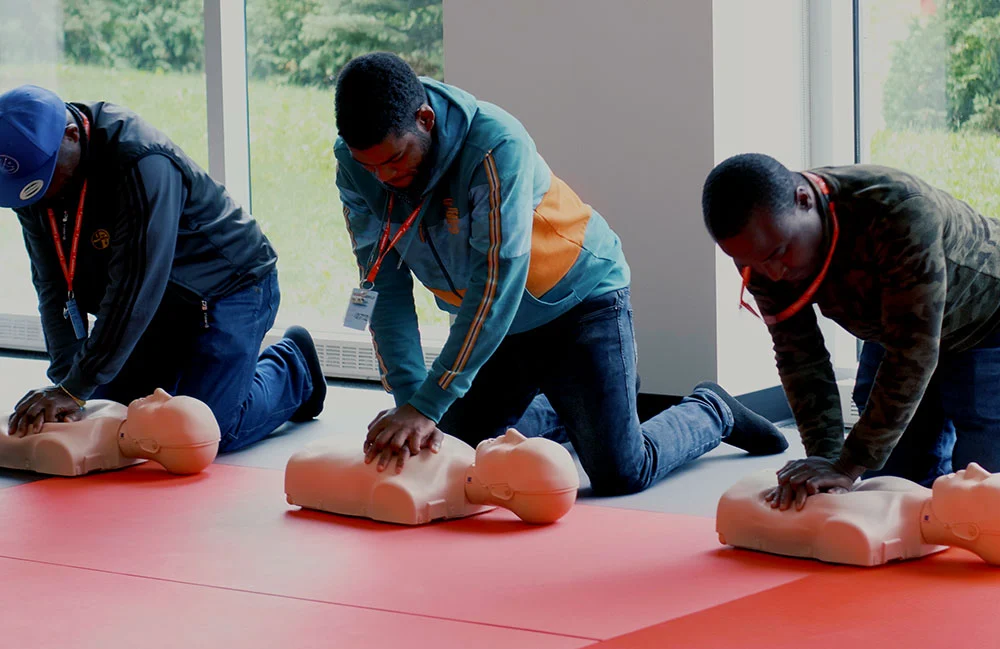We live in a world where anything can happen at any time, at home, at work, or in public. That’s when how quickly and well someone can act can often mean the difference between life and death. This is why knowing how to give first aid is so important. People take a first aid course to learn how to treat common injuries and medical emergencies. This way, they can help someone right away until professional help comes. In this piece, we’ll talk about the many reasons why everyone should take a first aid course, including how it can save lives, boost confidence, and help society as a whole.
Comprehensive Knowledge of Common Injuries
A Brisbane first aid course provides comprehensive knowledge of how to manage a wide range of common injuries and illnesses. This includes treating cuts, burns, fractures, and sprains, as well as dealing with more serious conditions like strokes, heart attacks, and seizures. Understanding how to administer first aid in these situations can prevent conditions from worsening and can even be life-saving.
For example, knowing how to correctly apply a tourniquet in the case of severe bleeding can prevent a casualty from bleeding out. Knowing how to spot the signs of a stroke and getting the person to the hospital quickly can greatly increase their chances of getting better. These skills are not just for extreme cases; they are also applicable in everyday situations, such as treating minor burns in the kitchen or managing a child’s fall at the playground.
First Aid Training in the Workplace
People and businesses alike can benefit from learning how to give first aid. Many places of work, especially those in industries where injuries are more likely to happen, are needed by law to have trained first aid staff on hand. But even in low-risk areas, teaching first aid to employees can make the workplace safer.
When accidents happen, employees who know how to give first aid can help quickly, which can lessen the seriousness of injuries and maybe even stop them from happening in the first place. When someone is choking or suddenly gets sick in the office, for example, knowing what to do can keep people from freaking out and make sure the person gets the care they need until professional help comes.
Moreover, having first-aid-trained employees can reduce the company’s liability. In the event of an injury, swift and appropriate first aid can prevent further harm, which could otherwise lead to more significant medical costs and legal complications for the employer. It also fosters a culture of safety and care within the workplace, demonstrating the company’s commitment to the well-being of its employees.
First Aid for Parents and Caregivers
For parents and caregivers, first aid training is particularly crucial. Kids are usually curious and don’t always know about possible dangers, which makes them more likely to get hurt or have an accident. The skills that parents and other adults who care for children need to make sure their safety and well-being are taught in a first aid school.
For instance, learning how to perform pediatric CPR or how to deal with a choking child can be lifesaving. Knowing how to treat cuts, scrapes, and minor burns is also essential for any parent. Moreover, first aid training teaches you how to recognise the signs of serious conditions, such as concussions or severe allergic reactions, so you can seek medical help quickly.
First aid knowledge also extends beyond physical injuries. Courses often cover how to handle situations involving shock, poisoning, and even mental health first aid, which can be vital in supporting children through traumatic experiences or emotional distress.
The Broader Impact on Society
When more people are trained in first aid, the overall safety of communities improves. In an emergency, the faster first aid is administered, the better the outcome for the victim. When more people in a community know how to perform basic first aid, the likelihood of immediate help being available increases, creating a safer environment for everyone.
Furthermore, first aid training fosters a sense of responsibility and care within communities. Those who are trained are more likely to intervene in an emergency, helping not just friends and family but also strangers. This willingness to help can have a ripple effect, encouraging others to seek out first-aid training and further enhancing community safety.
First Aid for Special Situations
There are risks that are special to some places and activities that make learning first aid even more important. For instance, people who like to do things outside, like hiking, camping, or water sports, should be ready to handle situations in remote areas where medical help might not be available right away.
Outdoorsy people who take first aid classes often learn how to treat injuries in tough circumstances, like how to stabilise fractures, keep someone warm, and deal with animal bites or stings. When help is far away, this specialised knowledge can mean the difference between a small accident and one that puts your life in danger.
Similarly, those who work in specific industries, such as construction, manufacturing, or transportation, face particular risks that general first aid training might not cover in detail. In these cases, specialised first aid courses can provide targeted skills that address the unique dangers of the job, ensuring that employees are fully prepared to manage emergencies.
Conclusion: The Vital Importance of First Aid Training
Learning how to give first aid is an important life skill that everyone should have. Take a first aid training if you want to be ready for anything. This is true whether you’re a parent, a teacher, an employee, or just someone who likes to be ready for anything.
By taking a first aid course, you are not just learning how to treat injuries; you are becoming a vital link in the chain of survival that can save lives. The confidence, preparedness, and sense of responsibility that come with first aid training are invaluable, and the broader impact on society is profound. In a world where emergencies can happen at any time, being trained in first aid is not just an option—it’s a necessity.

 Join Daily Trust WhatsApp Community For Quick Access To News and Happenings Around You.
Join Daily Trust WhatsApp Community For Quick Access To News and Happenings Around You.


